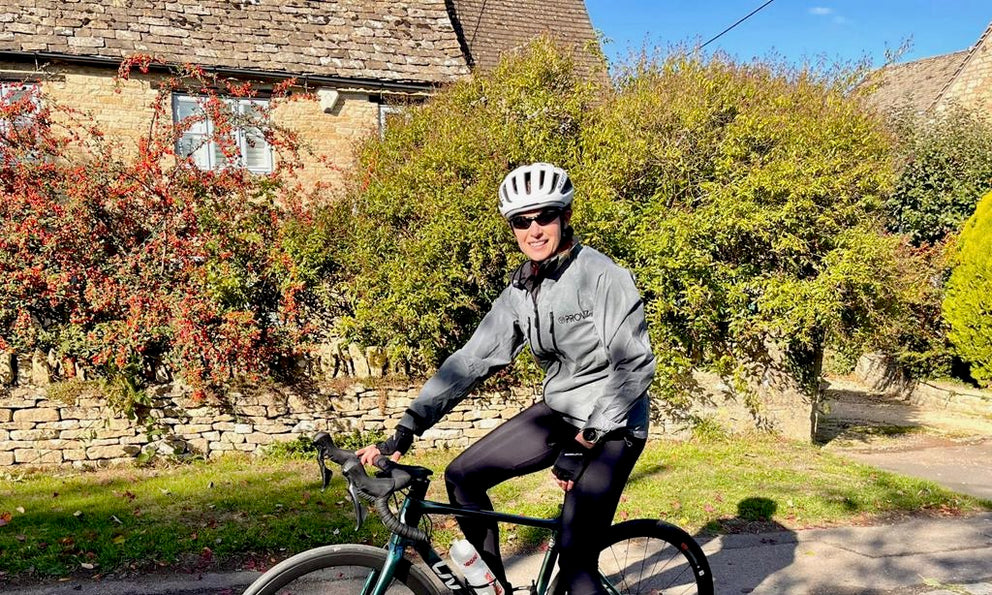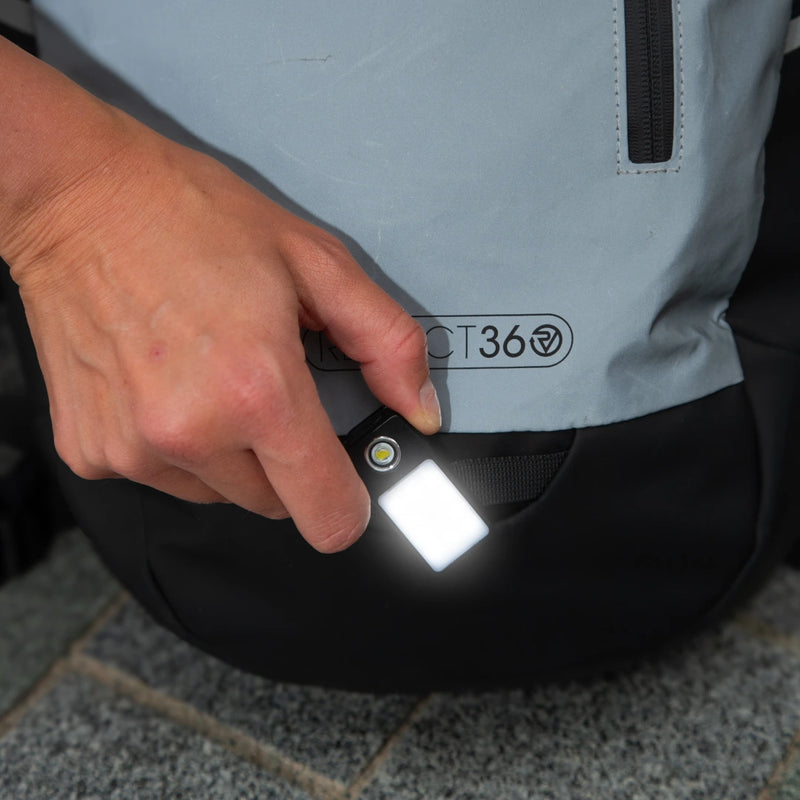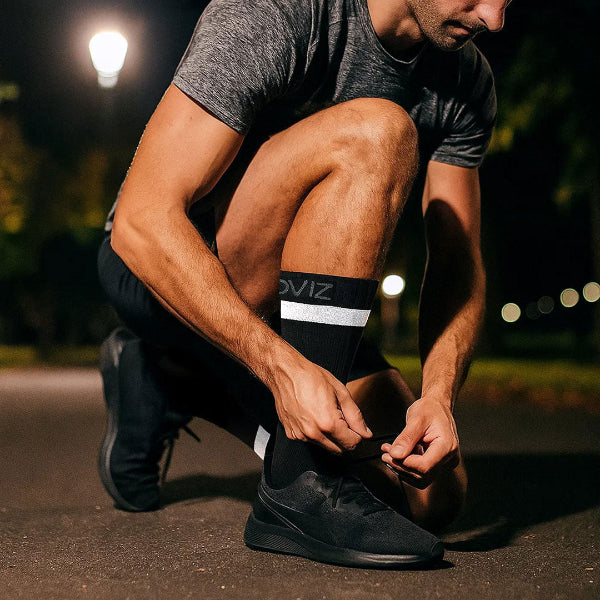UK Cycling Statistics
The coronavirus pandemic encouraged more UK citizens on to their bikes, both to boost their health and resilience to the virus and to avoid coming into contact with others on public transport. Facilitated by the restrictions around covid-19 and sustained by environmental concerns and increased energy costs, statistics show that the UK's love of cycling is growing. It is predicted that 'annual bike sales to run at more than double new car registrations by 2030' Mike Staton, Cycling Industry News, November 2020
As the UK population grows and the roads in our urban centres become more congested with motor vehicles, we have a golden opportunity to make our transport infrastructure more bicycle friendly.
Encouraging cyclists to make more cycle trips and persuading non-cyclists to grab a road bike and try cycling instead of using a motorised mode of transport for shorter journeys would improve public health, reduce air pollution and embrace a more sustainable, eco-friendly way of getting about.
But what are the stats you really need to know about UK cycling and does the data support the need for a better cycling infrastructure that can help take British cycling to new levels?
"The Bicycle Industry is in transformation and we are seeing a considerable growth in both sales and production of bicycles – in particular e-bikes – over the past years in Europe." Manuel Marsilio, CONEBI General Manager, Cycling Industry News
How popular is cycling in the UK?
According to the National Travel Survey at gov.uk, 47% of people in England aged 5 and over owned or had access to a bicycle in 2020. This demonstrates 5% increase compared to the 3-year average of 42% for 2017-19. This increase is evident across all age groups and was probably due to the changes in lifestyle necessitated by the coronavirus lockdown.
According to Cycling UK's Cycling Statistics, cycling usually only constitutes 1% of all traffic mileage (compared to 77% travelled in cars and taxis). However, during lockdown this doubled to 2% of all traffic mileage and the level of car and taxi usage dropped to 73%.
What effect did the Covid-19 pandemic have on UK cycling?
Walking and cycling proved to be the most popular forms of outdoor activity during the initial Covid-19 lockdown phase, with people walking for exercise up from 59% in week one to 63% in week six, and cycling increasing from 8% to 13%. That's compared to 61.9% of adults walking and 16.3% cycling at least twice a month pre-coronavirus.
Source: Sport England
Cycling increased up to 200% in the UK following the implementation of a national lockdown at the beginning of 2020, to curb the spread of Covid-19.
Source: gov.uk
In terms of miles cycled, the UK's average mileage per year has been gradually increasing since 1993, averaging 3.3 billion miles per year between 2015 and 2019. In 2020 this increased dramatically to 5.03 billion as a result of the changes to many lifestyles due to the Covid-19 restrictions.
Source: Cycling UK
Between March 2020 and March 2021, Scotland's National Monitoring Framework's automatic cycle counters recorded a 47% increase in cycle journeys compared to the previous year.
Source: Annual Cycling Monitoring Report, Cycling Scotland
The average length of cycling trips increased by 26% between 2019 and 2020. This not only suggests that people were opting to cycle rather than drive or catch public transport, but also that, during lockdown, many people had more free time and could choose to spend this on their bicycles.
Source gov.uk
The amount spent on new bicycles also increased significantly during the first year of the pandemic, increasing from £940 million in 2019 to £1.18 billion in 2020.
Source: ethicalconsumer.org
Has cycling remained popular in the UK since covid-19 restrictions eased?
Cycling (for leisure and sport) and running have both seen numbers fall back a bit since restrictions were eased in March 2021. It remains to be seen whether lockdown will have a sustained positive impact on the nation's physical activity levels or whether levels of cycling and running will revert to where they were prior to the pandemic.
Source: Active Lives Adult Survey November 2020-21 Report, Sport England
Who enjoys cycling most in the UK?
Bicycle ownership is most prevalent amongst people under 17 years old, as it remains a rite of passage for many parents to teach their child how to ride a bike at an early age. In addition, as people under 17 are unable to drive, getting around on a bicycle is quicker than walking and, if you do it a lot, it's cheaper than getting public transport.
In addition, cycling proficiency continues to be offered to many primary school children and, in February 2020, the UK government announced that it would be expanding its Bikeability programme, offering an additional 400,000 training places to 8-10 year olds to give them the skills they need to cycle safely and confidently on the road.
Source: gov.uk
What is the UK government doing to encourage more people to cycle?
In 2017 the Department for Transport published their Cycling and Walking Investment Strategy, which aims to build upon existing government initiatives promoting walking and cycling for public health and environmental reasons. The ultimate goal of the strategy is to make cycling and walking the natural choice for journeys under 5 miles in the UK by 2040. The report had four main objectives; to increase walking and cycling activity, to reduce the rate of cyclists killed or injured on the roads and to increase the percentage of children aged 5 to 10 that usually walk to school.
In order to achieve it's objectives, DfT detailed a range of investment areas aimed at bringing about behavioural change, improving road safety for cyclists and increasing partnership ties with local authorities and national charities (such as Living Streets, Sustrans and Cycling UK).
Read the full report here.
Gear Change Report, July 2020 - Department for Transport responds to the Covid-19 pandemic with this plan which aims to deliver:
- Healthier, happier and greener communities
- Safer streets
- Convenient and accessible travel
- A focus shift away from cycling and walking initiatives as afterthoughts towards transport policy and planning that has healthy, sustainable modes of transport at its heart.
In July 2021, a year after the Gear Change Report was published, Grant Schnapps announced a £338 million package to boost cycling and walking across the country (source: gov.uk)
In July 2022, the Department for Transport published the framework document for Active Travel England, which sets out the government's vision for creating a new "golden age of walking and cycling", where half of all journeys in towns and cities are walked and cycled by 2030.
In January 2022, the government introduced eight key changes to the highway code, including three new rules about a new ‘hierarchy of road users'. These changes are intended to improve the safety of people walking, cycling and riding horses.
Source: gov.uk
What is the UK Cycle2Work / Cycle to Work Scheme?
The cycle to work schemeallows employees to purchase commuter bikes and cycling accessories through their employer, whilst spreading the cost over a year and obtaining savings through a tax break.
Source: cyclescheme.co.uk
How many people cycle in the UK?
Between 2016 and 2021 the number of people participating in cycling in England increased from 5,044,400 to 6,479,900, and increase of over 28%.
Source: Sport England: Twice a month participation rate, Table 6b
In Scotland an average of 10.3% of people across all age groups participated in cycling in 2016 and this increased to 12.8% in 2020, with the biggest increase in bicycle usage evident in the 16-24 category (up from 13% in 2016 to 22% in 2020)
Source: Cycling Scotland
In Northern Ireland, the number of people participating in cycling for recreational purposes fell from 15% in 2015 to 11% in 2016 and stayed between 11% and 12% until 2021, when it increased to 18%.
Source: NISRA
In Wales, 4% of adults surveyed in 2020 claimed to cycle at least once a week for active travel purposes (though the sample size for this survey was smaller than that of the other UK countries).
Source: gov.wales
In which region of the UK is cycling the most popular?
According to a 2021 analysis by Trendz, 15.66% of survey respondents in Yorkshire and Humber listed cycling as one of their favourite forms of exercise, compared to only 7.55% in Scotland, 6.12% in Wales and 5.56% in Northern Ireland.
How far do pedal cyclists travel in the UK?
Between 2014 and 2016, the average distance cycled per person per year by 9.5%, to an average of 53 miles per person per year - source: gov.uk
However, between 2019 and 2020 it increased dramatically to 88 miles per person per year - source National Centre for Sports and Exercise Medicine.
This may be due to the effects of lockdown and it remains to be seen whether the easing of restrictions causes a drop in the number of miles cycled each year in the UK.
How much money is spent on bicycles in the UK each year?
In Q4 2018 we spent 390 million on bicycles in the UK. Between Q4 2018 and Q1 2020, our annual national expenditure on bicycles actually dipped by several million per quarter, before recovering and then booming when the Covid-19 pandemic hit. In Q1 2022 we spent £514 million on bicycles, more than in any other quarter since records began in 1985.
Source: ons.gov.uk
Which UK age groups are most likely to cycle?
It makes sense that the age group with the most bicycle users in it is the 5-10 year old category, for whom riding a bike is a new and exciting experience. A survey conducted by Sport England between 2017 and 2020 found that 88% of 5-10 year olds owned or had access to a bike, followed by 74% of 11-16 year olds.
On average, the popularity of cycling then declines in the late teens and twenties, when many people learn to drive. The survey found that riding a bike enjoyed a surge in popularity with 40-49 year olds, many of whom may site wanting to be more environmental friendly, a desire to get healthier or wanting to cycle with their children as a reason for taking up or rediscovering the sport at this time in their lives.
Source: England National Travel Survey 2020, table 0608
How much are British households spending on cycling?
The cycling industry in the UK has been booming since the Covid-19 pandemic. Between 2012 and 2015, annual household expenditure on bicycles fell from £1.4 billion to £1.1 billion. The amount spent on bicycles by UK households increased steadily over the next four years (rising to £1.5 billion in 2019) but it is undeniable that the pandemic prompted a spike is spending, with a huge £2.3 billion being spent in 2021.
Source: Office for National Statistics
Why are people in the UK cycling?
In England the largest proportion of trips by bike are undertaken for leisure purposes. 34.7% of respondents said they had cycled for leisure within the previous month, compared to 20.7% saying they cycled for travel purposes.
Source: Walking and Cycling Statistics, England: 2020, table cw0305
In Scotland in 2019 the figures are more similar, with 5% of respondents saying they cycled as a means of transport and 5.7% saying they cycled for pleasure or to keep fit. - Source: Cycling Scotland
In Wales between April 2019 and March 2020 4% of adults cycled at least once a week for travel purposes. - Source gov.wales
* Survey sizes and timescales differ between each UK country, which makes it is hard to make meaningful comparisons between nations.
WHICH BICYCLES ARE BEING RIDDEN IN THE UK?
How many people in the UK own an electric bike?
The UK e-bike market was valued at just under 0.20 billion GBP in 2021, and it is expected to reach over GBP 0.36 billion by 2027.
Source: Mordor Intelligence, United Kingdom E-Bike Market 2020 - 2027
According to a Trendz survey conducted in 2021, 1 in 20 people in the UK own an e-bike and 40% of people surveyed said they would cycle more if they had an e-bike. The UK is still some way behind Germany and the Netherlands, where e-bikes are more popular than anywhere else in Europe, but their popularity here is definitely growing.
How many people in the UK own a mountain bike?
According to Mintel's UK Cycling Market Report 2022, mountain bikes are the most popular type of bike in Britain, with one in three (33%) of bike owners owning an MTB.
Source: bikebiz.com
Which is the most popular bike retailer in the UK?
Halfords is the biggest bike retailer in the UK, operating 472 stores in Britain by 2020. The company's revenue across Britain and Ireland increased from £869.7 million in 2011 to £1.29 billion in 2021. Given that Halfords offer car parts and car maintenance as well as bicycle related kit, one cannot use this particular dataset to prove an increased expenditure on bikes and bike-related kit.
Source: Halfords Annual Report 2021
Along with being the most popular bricks and mortar cycling retailer in the UK, it is also the most searched for UK bike retailer online. Their online visibility increased by 23% in 2021, compared to 2020, and they are streets ahead of evanscycles.com, which is next on the list.
Source: Salience 2021 Cycling Market Report
However, whilst lockdown may have boosted cycling levels and generated a 57% rise in cycling-related sales, it also brought a series of challenges for Halfords, which shut 10% of physical stores between the start of the pandemic and April 2021 in order to try and offset the losses they endured to the car servicing and motor parts side of their business. Alongside supply chain issues caused by the joint disruptions of Brexit and the pandemic, Halfords is reaping both the troubles and the benefits of the UK's Covid-19 restrictions.
Which are the most searched bike brands in the UK?
- Specialized
- Giant
- Trek
- Canyon
- Brompton
- Ribble
- Cube
- Raleigh
- Orbea
- Cannondale
Source: Pedal Pleasure
WHAT ARE THE DANGERS OF CYCLING IN THE UK?
How many accidents involving cyclists are there in the UK each year?
The official number of cyclist casualties for each of the countries in the UK is based on those that are reported to the police. Unreported cyclist casualties, even ones that required hospital treatment, do not form part of the official data.
How many deaths from cycling does the UK record annually?
Between 2015 and 2020 an average of 104 pedal cyclists died each year in reported road casualties.
Source: gov.uk
How many casualties from cycling does the UK record annually?
Between 2015 and 2020, an average of 2 pedal cyclists died and 83 were seriously injured per week in reported road casualties.
Where do the majority of accidents involving bicycles happen in the UK?
Between 2015 and 2020:
- 56% of pedal cycle fatalities occurred on rural roads, but 81% of all casualties (including fatal, serious, slight and traffic) occurred on urban roads.
- Almost half (46%) of pedal cycle fatalities in two vehicle accidents involved a car.
Source: gov.uk
When do the majority of accidents involving bicycles happen in the UK?
According to government research between 2015 and 2020, the majority of accidents involving bicycles occur during the peak commuting times in the morning and evening (peaking at around 8am and 6pm). On Saturdays and Sundays, late morning is the most common time for a cycling accident to occur.
The most common reason cited for both cycling fatalities and serious cycling casualties during this time period was that the driver or the rider failed to look properly. It is interesting to note that a cyclist wearing dark clothing contributed to more accidents in the UK between 2015 and 2020 than losing control, travelling too fast for the conditions, not using bike lights and either the driver or the rider being impaired by alcohol consumption.
Source: gov.uk
UK Cycling Statistics Conclusion
The UK is at a key point in its history. We are a small and over-crowded nation with a travel infrastructure that generally favours the 32.8 million cars registered for use on our roads. The coronavirus lockdown restrictions drastically reduced the number of cars in our city centres and the temporary measures put in place to make life easier for cyclists provided a sneak preview to the kind of city streets we could have permanently if we generate enough city cycling development plans and invest in making them a reality.
One of the key things that puts people off cycling for travel and getting out for leisure bike rides is safety concerns. Whilst you could argue that the benefits of cycling outweigh the potential dangers of physical inactivity (even on roads that are not specially laid out to make cycling safe and enjoyable), it is unlikely that there will be a shift away from car use for short journeys unless real energy (and money) is invested in improving cycling conditions and prioritising the safety of vulnerable road users over the convenience of drivers.

















